In modern football, pressing is not just about intensity—it’s about intelligence, coordination, and recognition of triggers. While spontaneous pressing occurs in chaotic moments, elite teams rely heavily on set pressing triggers to initiate coordinated actions that disrupt opponents’ build-up play. This article focuses on how coaches can design pressing drills based on specific triggers, such as passes, touches, and body orientation. These triggers form the backbone of structured pressing systems used by top-level clubs.
What Are Set Pressing Triggers?
Set pressing triggers are pre-defined cues that a team or pressing unit uses to initiate a press. These cues are often linked to specific opponent actions or body mechanics. The most common include:
- Backwards pass
- Lateral pass under pressure
- Poor or heavy first touch
- Body shape facing own goal
- Receiving player on their weaker foot
- Pass into a sideline trap or isolated area
Recognizing these triggers and responding collectively is crucial for maintaining pressing compactness, minimizing exposure, and forcing errors.
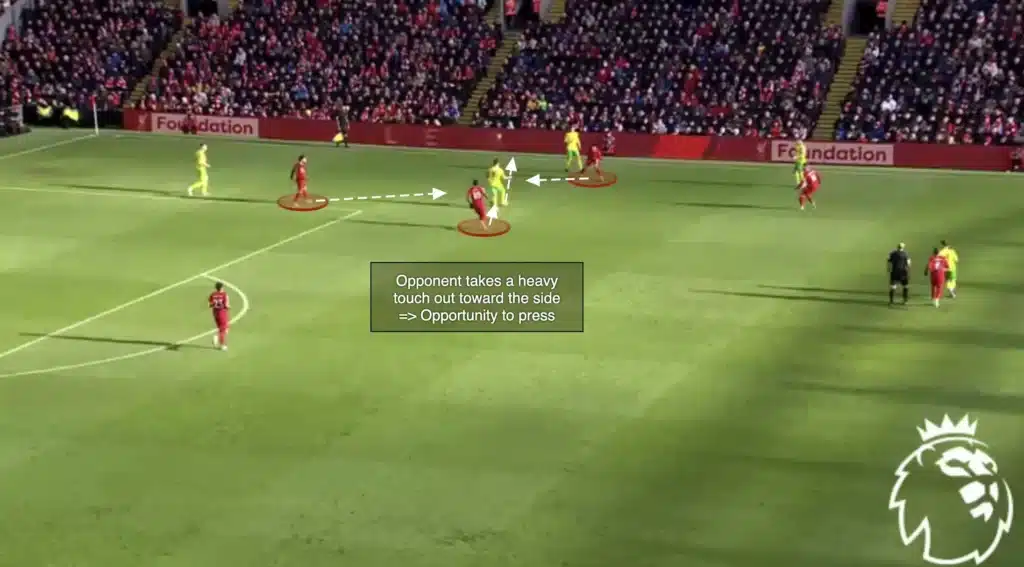
Why Train Pressing Triggers?
Coaches often see pressing as an “effort” task, but the timing, decision-making, and coordination behind pressing actions require repetition and clarity. Training pressing triggers allows players to:
- Read and anticipate opponent behavior
- Synchronize pressing efforts as a unit
- Avoid disorganized or late presses
- Conserve energy by only pressing when conditions are favorable
- Understand their role in pressing traps or collective pressing mechanisms
Drill Design Principles
When designing drills for pressing triggers, keep in mind:
- Realism: Use game-like positioning and pressure levels.
- Decision-making: Include variables (e.g., opponent’s touch or pass type) that force players to react.
- Small-group focus: Train in units (6v6s, 5v5s, 4v4+3) to foster coordinated reactions.
- Contextual repetition: Repeat similar pressing scenarios but vary the moments to trigger the press.
Drill 1: Pressing Trigger – Backward Pass
Objective: Train players to initiate a coordinated press immediately upon a backward pass.
Setup:
- Grid: 25×20 meters
- Teams: 5v5
- One team attempts to progress the ball from one end zone to the other
- The defending team applies medium pressure until a backward pass is played
Rules:
- Once a backward pass is played, defenders may engage with full pressing intensity
- Points awarded for successful turnovers or preventing progression
- Reset after each transition or turnover
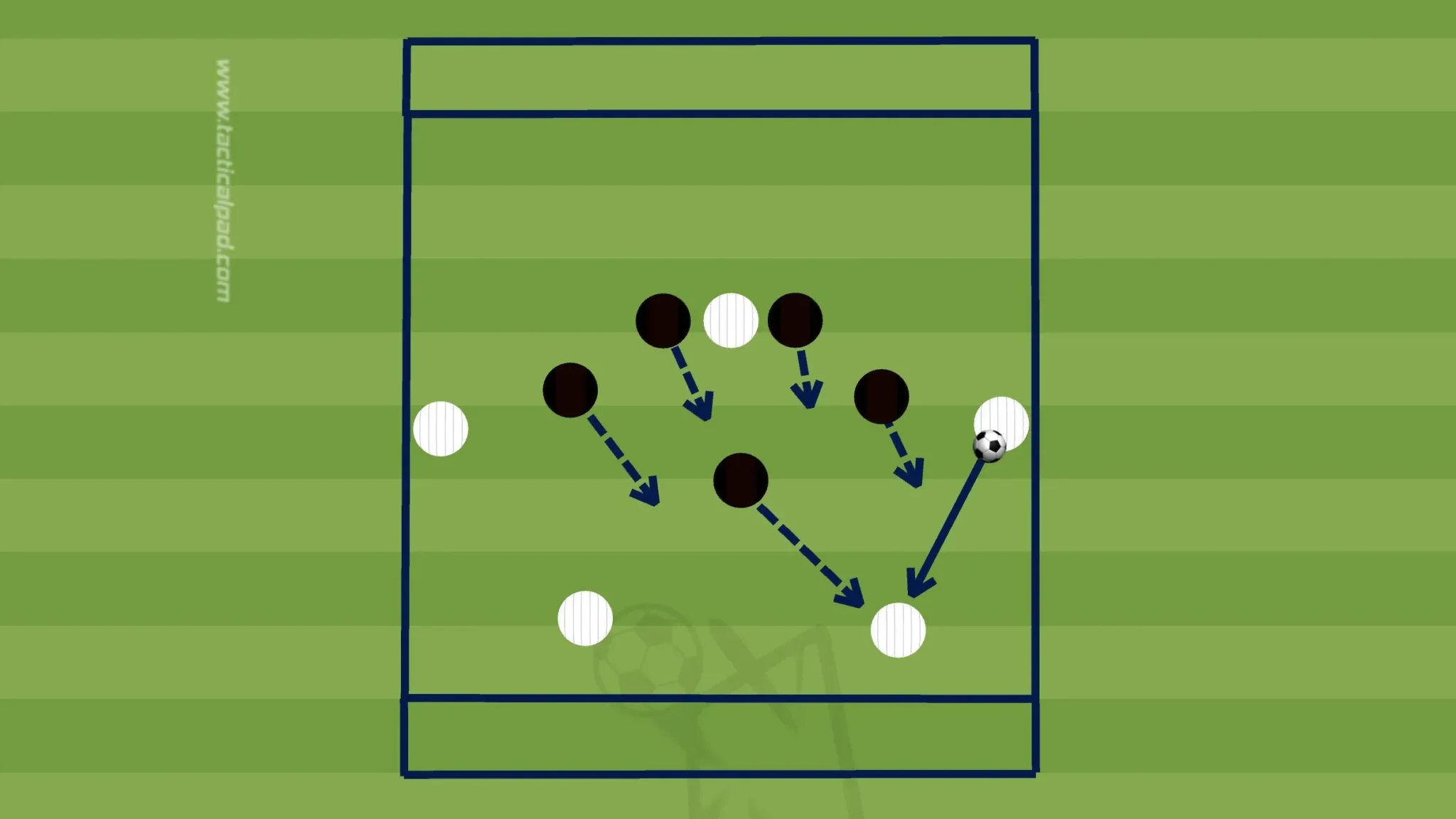
Coaching Points:
- Nearest presser sprints at full speed with curved run to block pass lane
- Second and third defenders lock up nearby passing options
- High line defender steps up to compact space
Drill 2: Pressing Trigger – Poor Touch or Heavy Control
Objective: Improve reaction to poor touches by the opponent.
Setup:
- Grid: 20×20 meters
- 4v4 + 1 neutral possession game with 2 small goals at each end
- Coach or assistant serves passes to attacking players at varying speeds
- Some passes are intentionally difficult to control
Rules:
- Defenders must delay pressing unless the opponent shows a heavy or poor touch
- Upon a bad touch, defenders are allowed to fully commit to win possession
- Bonus point if they score within 6 seconds of recovery
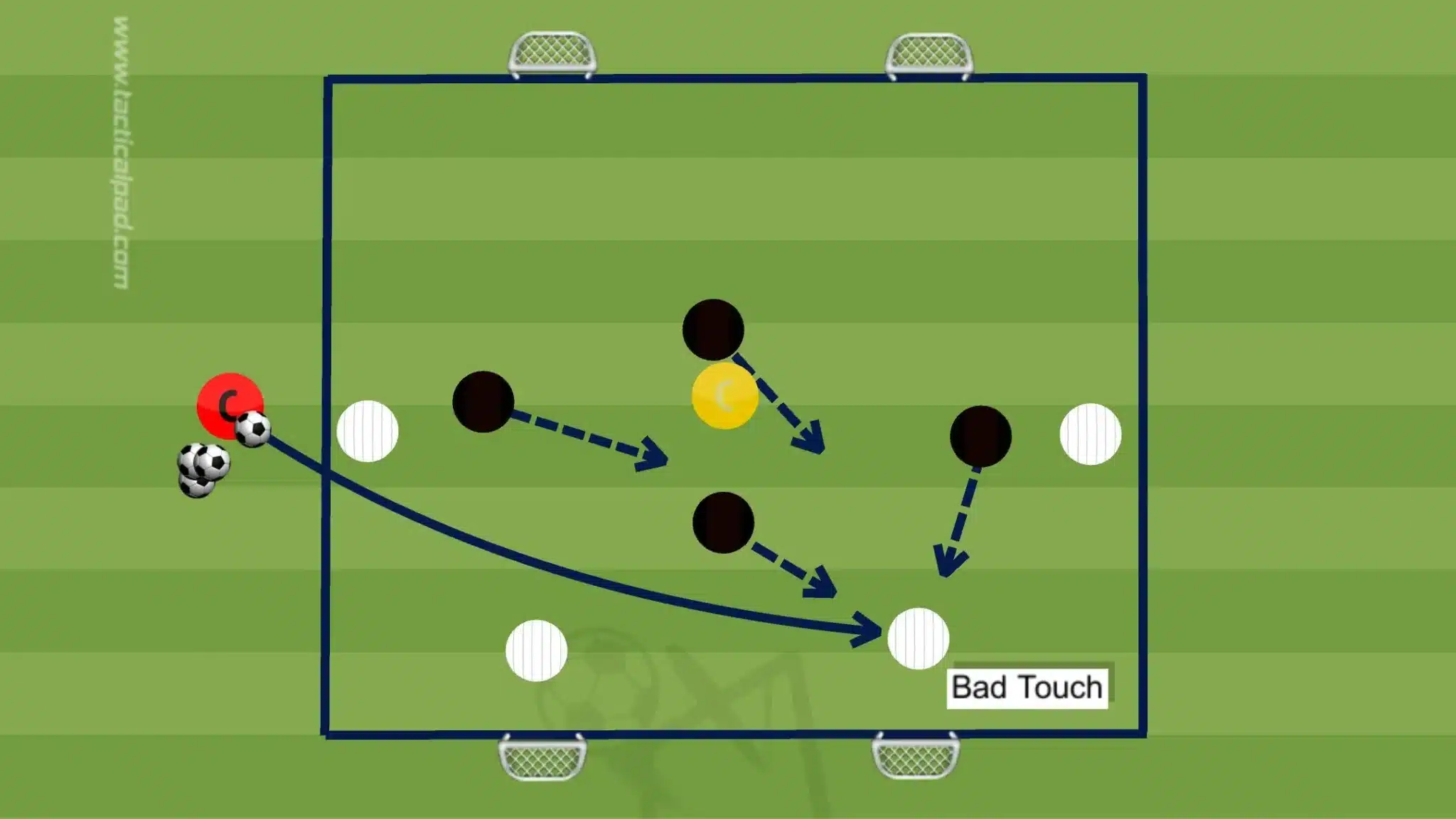
Coaching Points:
- First defender cues press based on opponent’s first touch
- Covering players step in aggressively to close second options
- Communication and quick reaction are essential
Drill 3: Pressing Trigger – Opponent Body Shape Facing Own Goal
Objective: Exploit body orientation of receiving players to apply smart pressure.
Setup:
- Grid: 30×25 meters
- 5v5 or 6v6 with mini goals or target zones
- Coach stands centrally and feeds passes to players in back line or midfield
Rules:
- Defenders may only press when the opponent receives facing their own goal
- If the player receives facing forward, defenders must contain
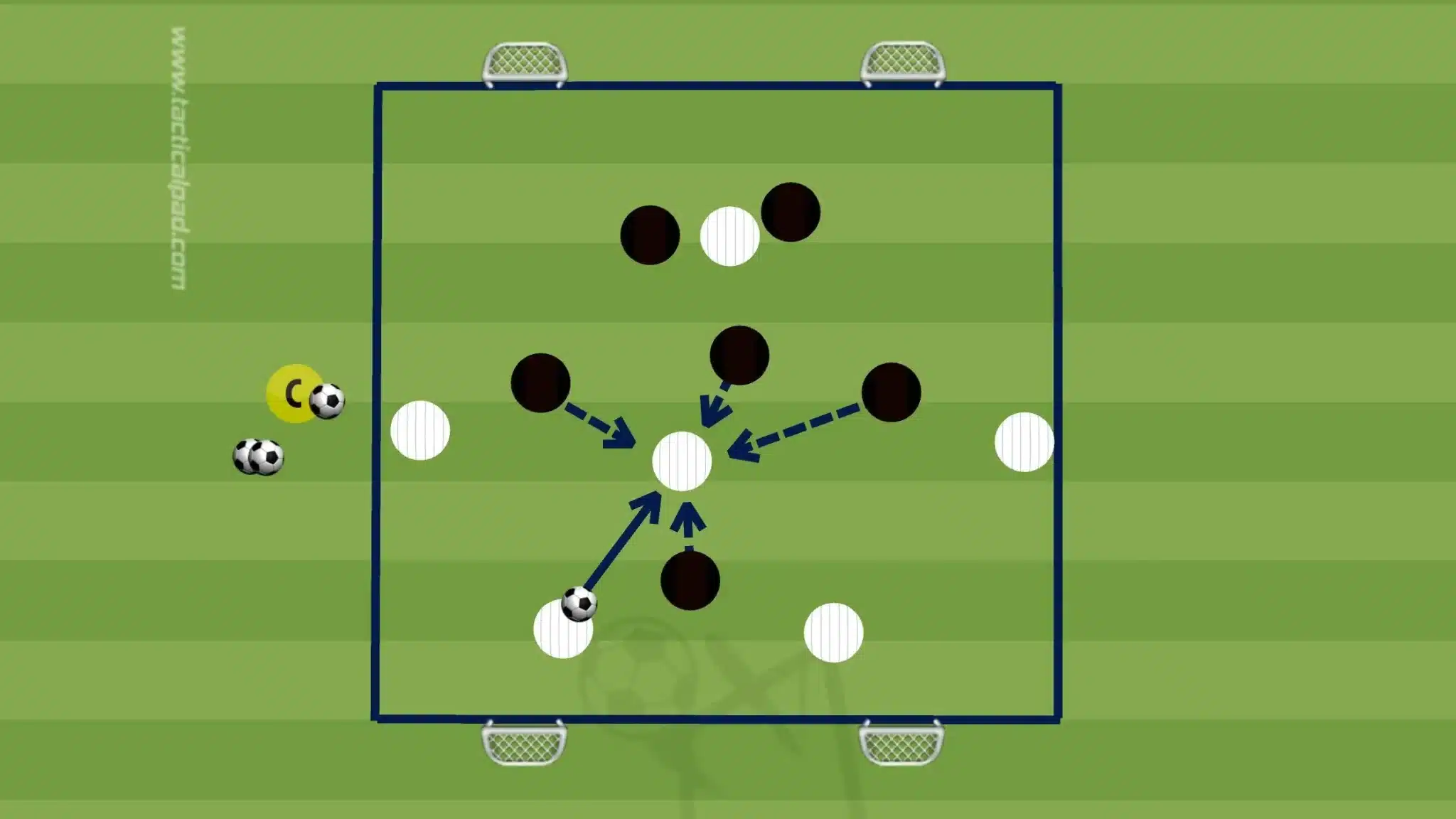
Coaching Points:
- Recognize when the opponent’s body shape limits forward options
- Initiate press while cover shadows nearest options
- Outside defenders angle their run to push play wide or into a trap
Drill 4: Pressing Trap – Guiding into the Sideline
Objective: Combine pressing triggers and collective shape to trap wide.
Setup:
- Half-pitch
- Team in possession (e.g., 6 attackers) attempts to build from the back
- Defending team (e.g., 5 players) sets up a pressing trap
Rules:
- Attacking team builds play normally
- Defensive team applies passive pressure until a lateral or wide pass is played
- That pass becomes the trigger for the unit to shift aggressively
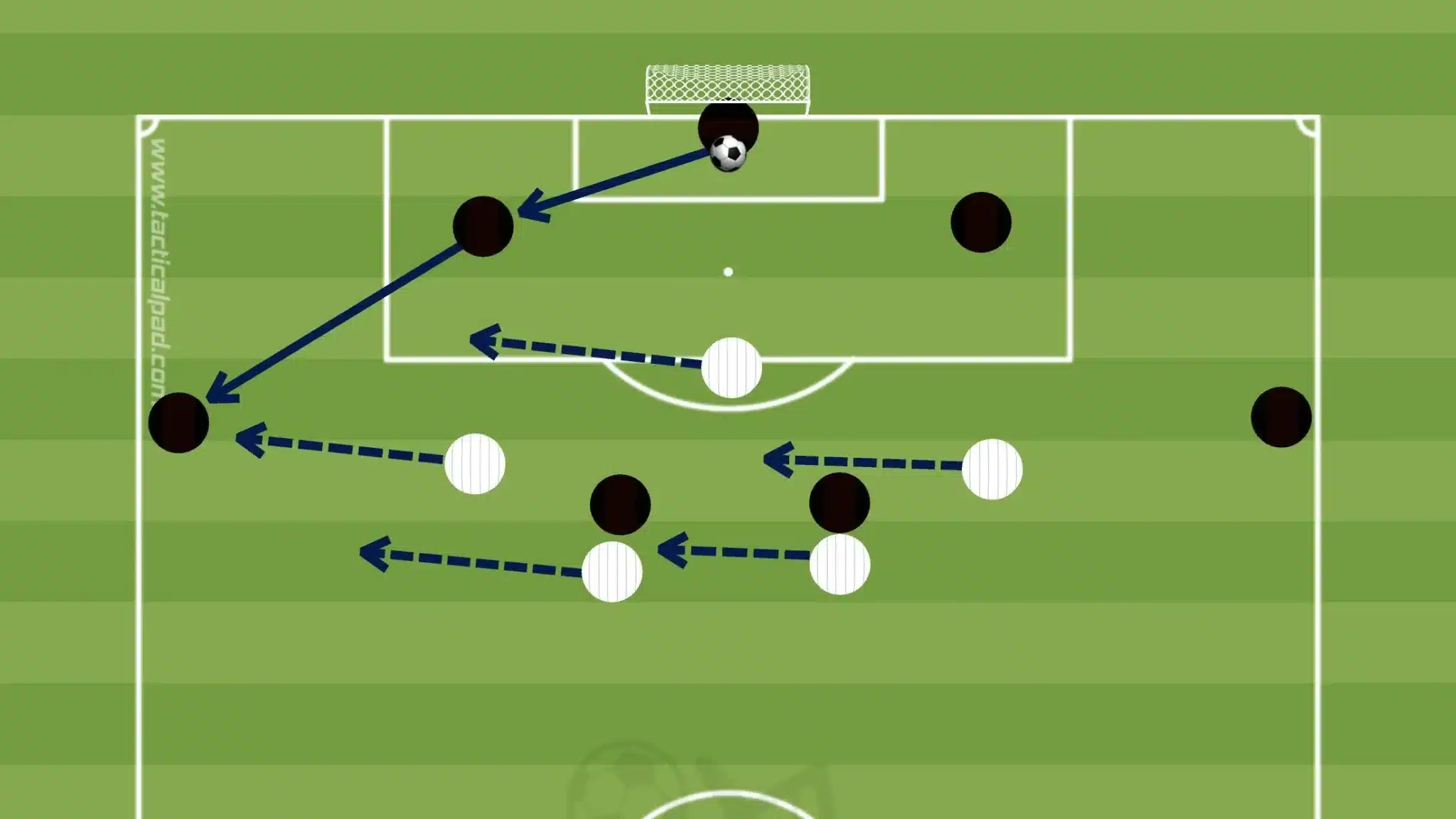
Coaching Points:
- Timing the press as the ball travels
- Nearest winger or fullback jumps to press
- Central midfielders cut passing lanes back inside
- Backline shifts to support compactness
Coaching Considerations and Progressions
- Start with trigger recognition in isolation, then move to full team dynamics.
- Rotate players through roles so everyone understands how to spot and react to cues.
- Add time limits, transition goals, or numerical advantages/disadvantages to increase decision-making complexity.
- Include video feedback or freeze frames during sessions to highlight proper execution.
Conclusion: Training Intelligent Pressers
While pressing relies on physical effort and aggression, the most effective pressing teams rely on reading the game and reacting to triggers. Training set pressing triggers builds this collective intelligence, ensuring players press together at the right moment. With structured drills focused on backward passes, poor touches, and opponent body shape, coaches can instill a tactical understanding that elevates pressing beyond instinct—into strategy.
